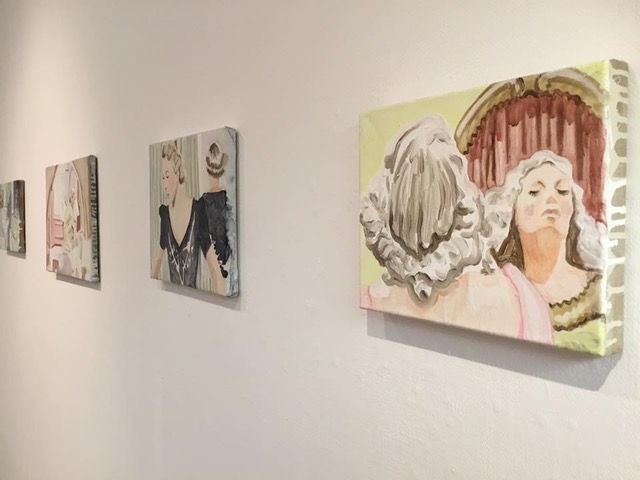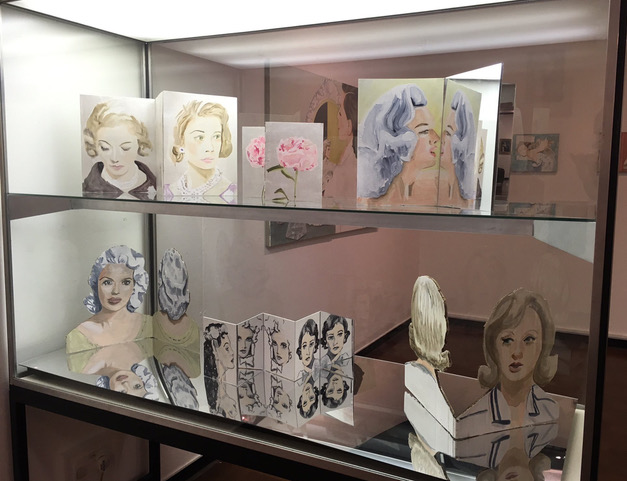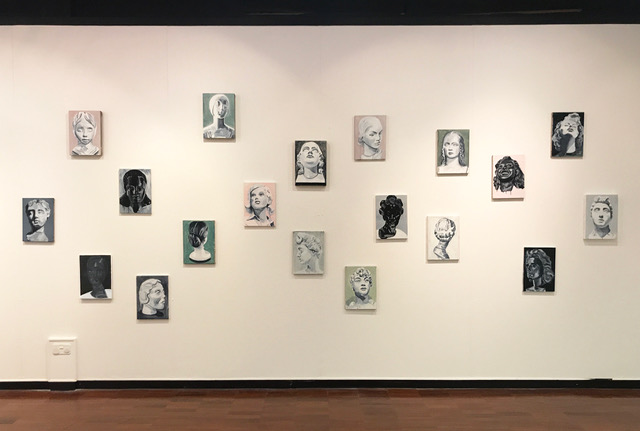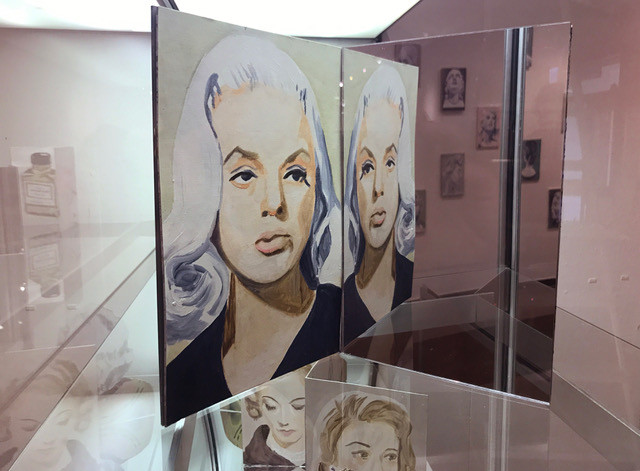A solo exhibition by Cathy Lomax.
Swindon Museum and Art Gallery: 6th – 30th September 2017
Cathy Lomax won the Contemporary British Painting Prize in 2016 and her solo exhibition, The Blind Spot, which features new paintings that examine looking and being looked at, is part of her award.
The Blind Spot refers to our inability to conceive of ourselves as we really are; ‘that mysterious ‘blind spot’ we call the self’, notes Paul O’Kane in an essay about Lomax’s work. This is no surprise when we consider that the women who stare back at us from screens and magazines set an impossible standard of perfection, their human-ness controlled and re-presented as a less troublesome fixed beauty. This is also true of the historic women who populate art and visual culture, who have been frozen in stone, bronze or paint or lingered over by photographers and cinematographers becoming luscious close ups that have a different, softly unreal look to the rest of the film.
Many of Lomax’s paintings are derived from film imagery, a medium that often utilises the nuanced language of mirrors. As the director Douglas Sirk said, ‘You can do remarkable things with mirrors; it is a medium of getting to know about oneself.’ A mirror on-screen can indicate that a character has a split personality or is two faced, it also allows us to look at the actor while they consider themselves – a moment of exquisite intimacy.
When we look at ourselves in the shiny surface of a mirror we don’t see a true reflection, instead we are flattened and reversed. To quote Sirk again, ‘the mirror is the imitation of life. What is interesting about a mirror is that it does not show you yourself as you are, it shows you your own opposite.’
In The Blind Spot Lomax captures numerous women in paint, trapping them in their mirror image, setting them up in opposition and dialogue with both themselves and the voyeuristic position of the viewer. Rather than masquerade as uncanny airbrushed perfections, these works do not hide their making; their brush marks and drips proclaim their construction as paintings.
Alongside the reflection paintings and a series of 3D identity works, the show includes a painting of Swindon born Diana Dors atop a plinth and 19 Merry Maidens, a series that references a Cornish stone circle where women were petrified as punishment for dancing on the Sabbath.




